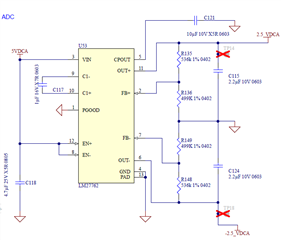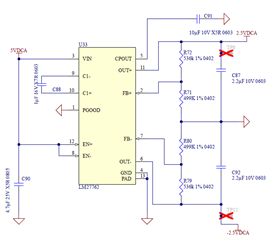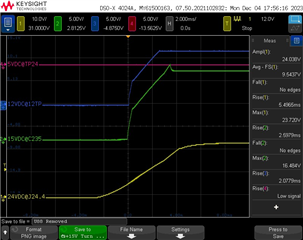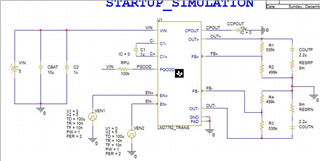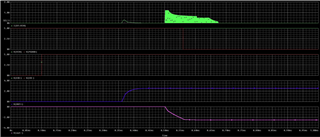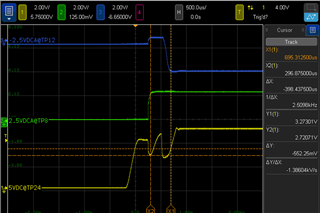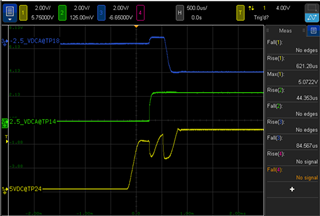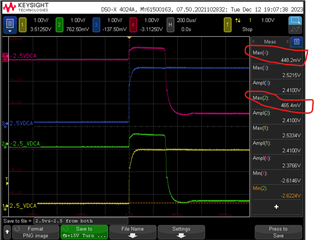Other Parts Discussed in Thread: LM27762, ADS114S08, LM27762EVM
Hi,
This is regarding the LM25575MHX/NOPB Step down switching regulator. Refer attached schematic snapshot and Power supply topology.
We are using this in one of our products with the following specifications:
- Input Voltage Range: 21.6Vdc to 26.4Vdc
- Output Voltage: 15Vdc
- Output Current: 0.5Amax
We are observing some startup glitch at the 15V output. See below green waveform.
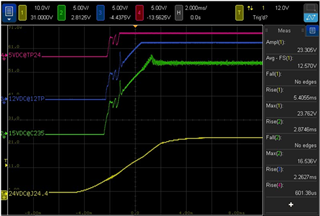

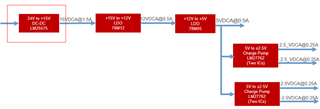
When I was trying to simulate this using Webench, the simulation is failing (Simulation not running).
Can you try to simulate or suggest what changes should be made in the design to overcome this startup glitch?
Also suggest how to make Webench simulation working.
Let me know if you need any additional details.
Appriciate if you could send me an email on Kamalnish_Arora@STERIS.com with suggested solution.
Thanks for your support.


